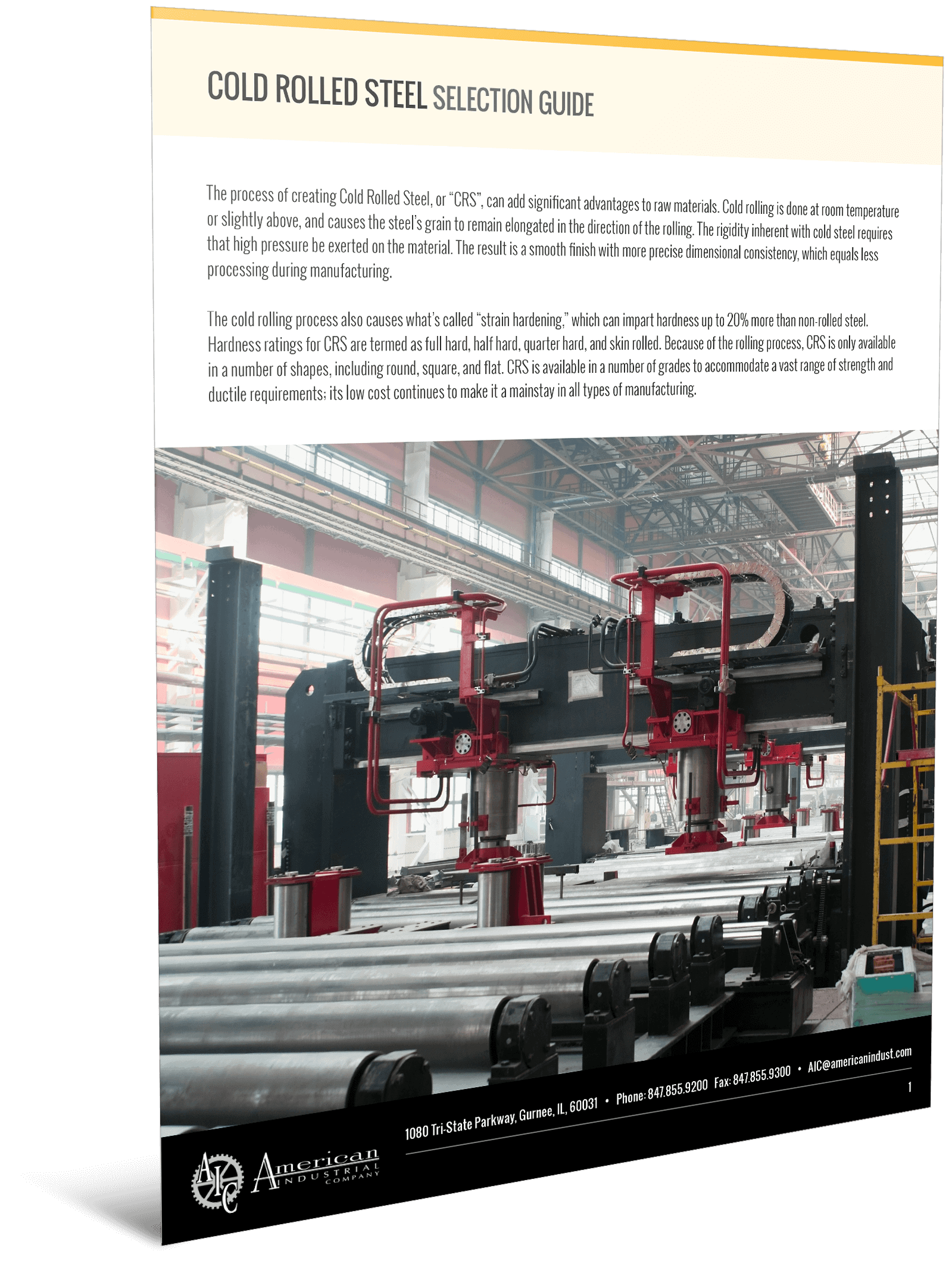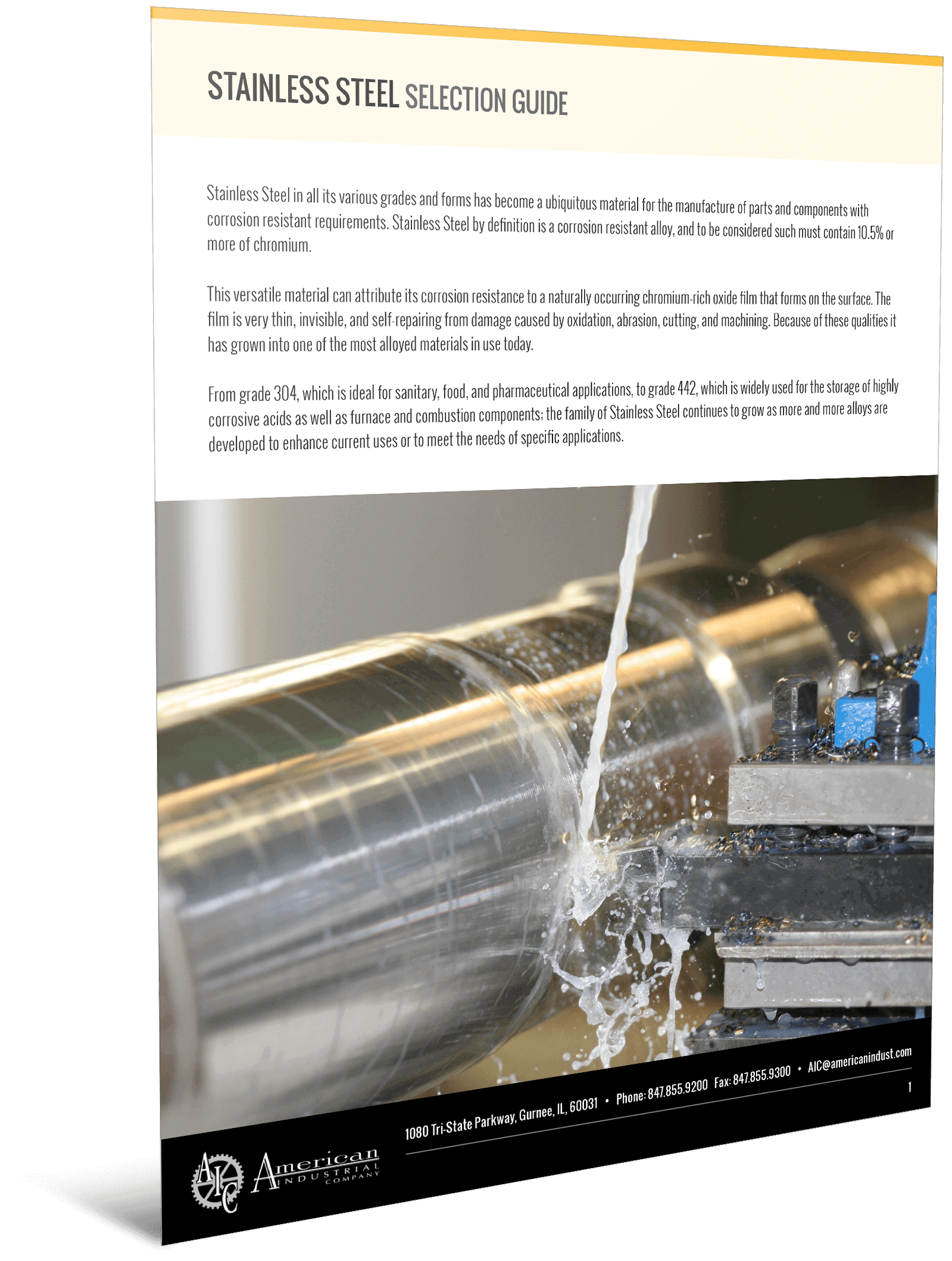Bring your product designs and new component iterations to life with precision metal forming services from American Industrial. We offer comprehensive blanking, machining, and secondary processing services. Our clients trust us to complete intricate designs and tackle even the most challenging projects.
Whether you’re looking for reliable access to specialty services or a single service provider, you can trust us to provide what you need.
Design to Prototype to Production eBook
Metal Forming Capabilities
At American Industrial, we offer a range of metal forming processes to customers with varying needs. Our in-house capabilities include coining, progressive stamping, forming, bending, piercing, laser cutting, and more. We also provide secondary operations and processing services like deburring, finishing, welding, and assembly.
Progressive Stamping
Progressive stamping is a multi-stage process that transforms metal into complex three-dimensional components. Operators run a continuous stock strip of metal through sequential die stations. Each station makes a new bend, a puncture, or a deeper bend in the metal. Once this sequence is complete, the end piece is cut from the stock strip to undergo any additional processing.
Progressive die stamping is a popular metal forming process because it is fast, shortens lead times, and can produce a wide range of shapes and sizes based on the tooling.
Bending
Our metal bending services are fast and cost-effective. We offer budget-flexibility tooling compared to other metal forming options. Our wide range of tools and equipment allows us to quickly complete intricate bend designs.
The most common option for metal bending is press brakes. The metal is clamped in position and then carefully bent at a specific point and angle to match the design. Press brakes work with most metal materials, from aluminum and brass to stainless and galvanized steel. Some common applications for metal bending include automotive components, electrical components, and product assembly enclosures.
Blanking and Piercing
Steel blanking is a common first step when forming metal goods. Blanking machines can cut strips of sheet metal into various stock shapes for additional bending and processing. Manufacturers can then bend and shape each individual piece into a final product.
Blanking processes use the press and die to cut and bend the metal, which results in pieces that look virtually identical across each order. Blanking is particularly popular when producing steel goods, as it can significantly cut down on cost, effort, and potential waste. After cutting, the remaining metal can be recycled or processed in other projects.
Piercing also involves punching pieces out of metal. In this process, the cylindrical pieces being cut are the waste material, with the remainder of the cut sheet being used to create the final product. Piercing can be used to manufacture mesh or serrated flooring for industrial facilities.
Coining
Coining is used to add any final details or surface finishes to intricate metal components. This cold metalworking process uses punches, dies, and other deforming tools to press detailed shapes and textures into a metal surface. A metal sheet is pressed between two dies, leaving the desired shape or design.
The high compressive force produced during this process causes the metal to bend like plastic, permanently deforming the piece based on the design requirements. Metal manufacturers can use coining to add decorative features or smooth out flat surfaces. Special dies can also create depressed or raised images.
Laser Cutting
The tools used to cut metal goods can have a major impact on the strength, precision, and final shape of a metal edge. For example, mechanical cutting processes can shape or deform metal edges, while waterjet cutting might lead to corrosion when used with certain metals.
Laser cutting uses a precisely positioned laser beam to cut through metal with minimal damage or material waste. Programmable tools can engrave the surface, create holes, and cut intricate two-dimensional shapes. Rapid melting or vaporization of the target material allows for speed and precision when cutting and is suitable for use with a range of metal and non-metal materials.
Secondary Operations
At American Industrial, we’ve been providing extensive secondary operations that simplify supply chains and deliver quality finished goods since 1981. We continually update our service offerings based on the needs of our customers. These can range from welding and assembly to deburring and less common secondary services.
Industries Served
OEMs in industries such as heating and cooling, construction, medical, lighting and electrical trust us with their precision metal forming projects. We handle a wide range of material options and can work with steel (stainless, high/low carbon, cold/hot rolled, and galvanized), as well as high-strength low alloy, brass, aluminum, and copper. This makes us a versatile fabricator whose capabilities continue to serve a broad industrial audience.
Commitment to Quality
Quality assurance is a top priority for us and we’re fully ISO 9001;2015 certified. Our quality control processes ensure that components live up to the high standards we set for ourselves. Utilizing a lean manufacturing environment allows us to provide the highest level of service to all of our customers with results that consistently exceed expectations.
Precision Metal Forming Services from American Industrial
To learn more about American Industrial Company’s precision metal forming capabilities, please contact us today or request a quote to speak with a specialist about your project requirements.
Design to Prototype to Production eBook








